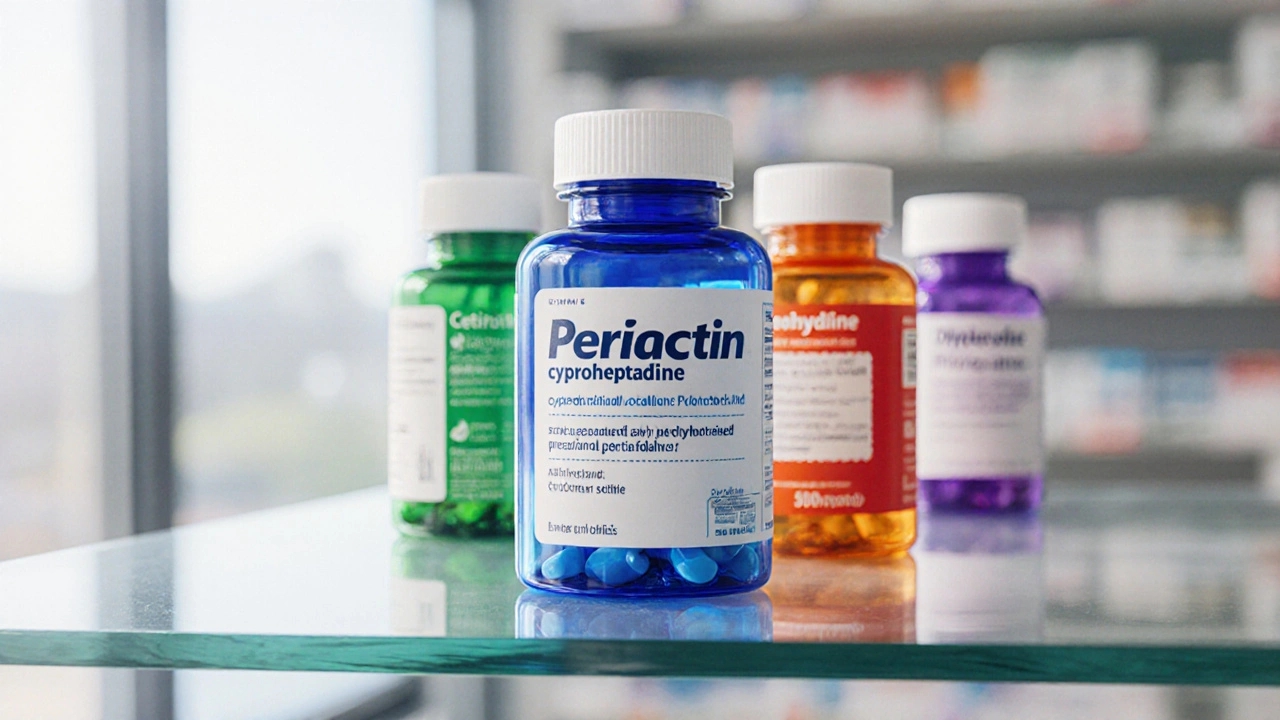Antihistamine Comparison: Find the Best Allergy Relief
When looking at Antihistamine comparison, a side‑by‑side review of common antihistamine medications. Also known as antihistamine guide, it helps you weigh efficacy, safety, and price before you reach for a pill.
This comparison includes two main drug families. First‑generation antihistamines, older drugs that often cause drowsiness sit on one side, while Second‑generation antihistamines, newer, non‑sedating options sit on the other. Understanding the difference is essential because the drug class determines how quickly symptoms ease, how long relief lasts, and whether you can drive after taking a dose.
Allergic rhinitis, the most common trigger for these meds, drives the need for fast, reliable relief. Allergic rhinitis, inflamed nasal passages caused by pollen, dust, or pet dander can make you sneeze, itch, and feel miserable. Choosing the right antihistamine hinges on how each drug tackles those symptoms without adding unwanted side effects. For example, cetirizine often offers 24‑hour relief but may cause mild sleepiness, whereas loratadine is praised for minimal sedation.
Cost and availability add another layer. Many second‑generation antihistamines, such as fexofenadine, are sold over the counter, making them easy to pick up at a pharmacy. Prescription versions sometimes provide higher doses for severe cases, but they also bump up the price. When you compare brands, look at the price per milligram of active ingredient and the number of tablets in a pack—these simple metrics give a quick sense of overall value.
Form factor matters, too. Tablets, chewables, and liquid gels cater to different preferences and age groups. Kids often prefer flavored chewables, while adults may favor fast‑acting tablets. Some users need a rapid‑onset formula for sudden flare‑ups, in which case a liquid gel might be the best pick. The dosage range, from 5 mg to 180 mg, also varies by drug and by whether you’re treating mild seasonal allergies or chronic year‑round symptoms.
Special populations require extra attention. People who operate heavy machinery, drive frequently, or need full alertness should lean toward non‑sedating options like loratadine or fexofenadine. Those with a history of liver issues should check the metabolism pathway; fexofenadine is mostly excreted unchanged, making it gentler on the liver. Pregnant or breastfeeding women need a clinician’s guidance, as safety data differ among the drugs.
Key Factors to Compare
When you line up the options, evaluate four core factors: efficacy, side‑effect profile, dosing convenience, and cost. Efficacy answers whether the medication clears sneezing, itching, and watery eyes within an hour. Side effects cover drowsiness, dry mouth, or headache. Dosing convenience looks at once‑daily vs. twice‑daily schedules and the form you prefer. Cost checks retail price and insurance coverage if you have a prescription. Mapping these attributes against your lifestyle creates a personal antihistamine scorecard.
By reading the posts below, you’ll see real‑world data on cetirizine, loratadine, fexofenadine, and a few first‑generation rivals. Each article breaks down study results, user experiences, and price checks, so you can match a drug to your exact needs. Ready to dive deeper? The comparisons ahead will give you the facts you need to make a confident choice.
Periactin (Cyproheptadine) vs. Other Antihistamines: Detailed Comparison
A side‑by‑side review of Periactin (cyproheptadine) versus top antihistamine alternatives, covering efficacy, side effects, cost, and best‑use scenarios.
© 2025. All rights reserved.

